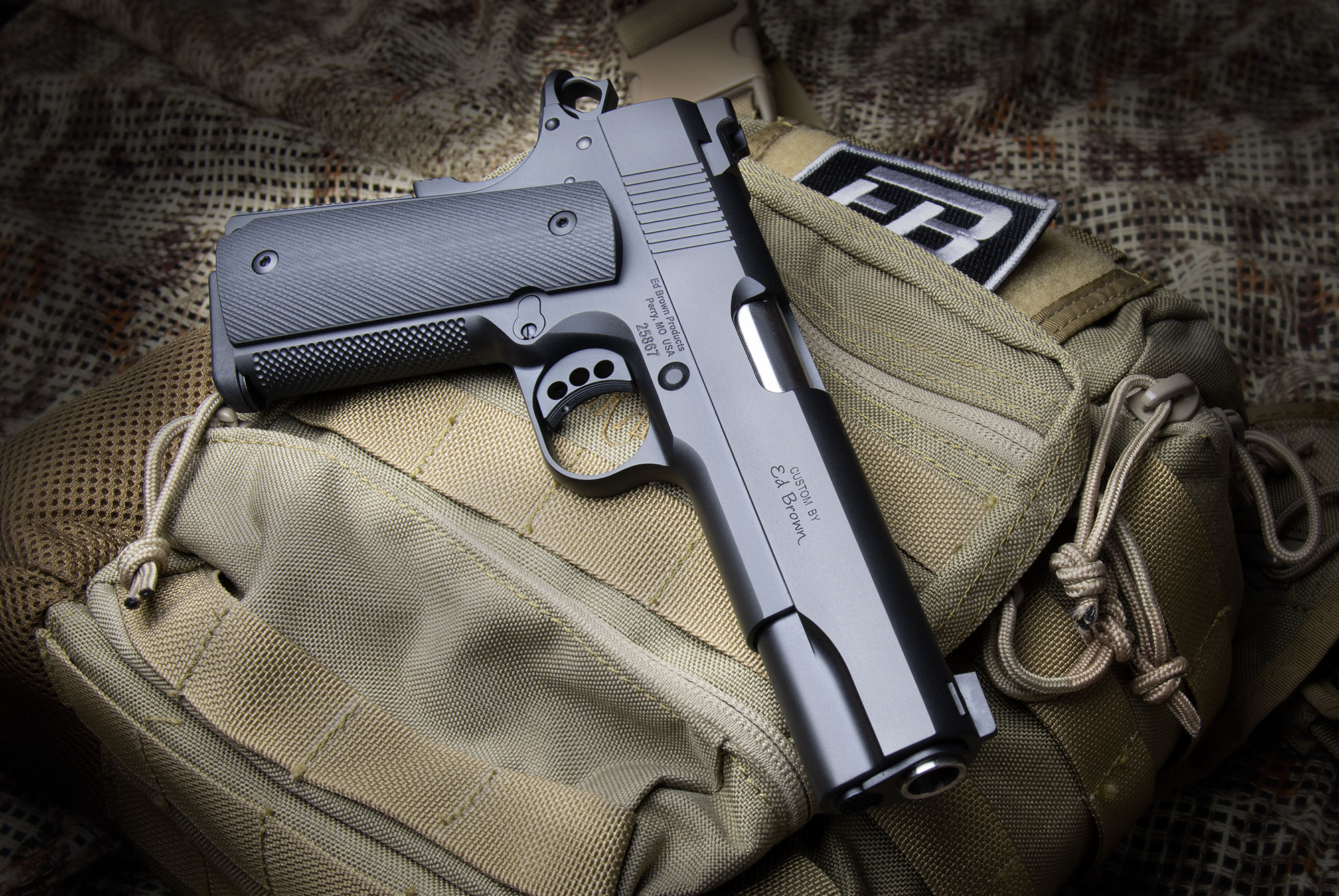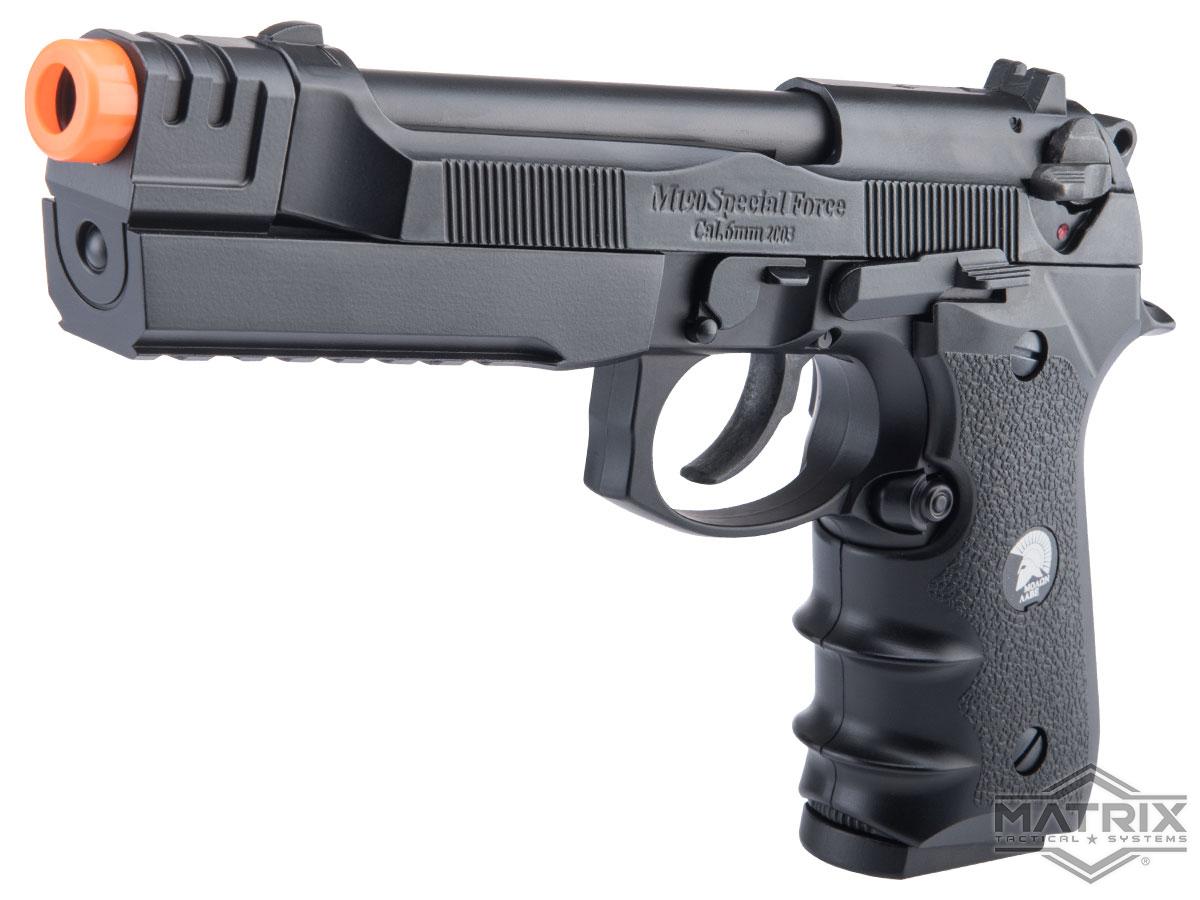Special Forces Pistols - The Glock pistol has become the standard for measuring modern pistols. The polymer-framed, shock-molded design has served as inspiration for some of the most popular pistols in the civilian, law enforcement, and military markets. Even the Army's newest official weapon, the M17/M18 MHS SIG Sauer, uses many of the design principles used in the Glock17 in the early 1980s.
Despite the standardization of the M17/M18 in the military, the Special Operations Command (SOCOM) chose to standardize the Glock 19 as the pistol of choice. From the Navy to the Green Berets, the Special Operations community is passionate about Austrian designs. However, this is not always the case. To get Glock into SOCOM, it took some clever writing by Army Special Forces.
Special Forces Pistols

The Beretta M9 was adopted as the primary weapon of the US military in 1985, and that hasn't changed much during the Global War on Terror (GWOT). Many fighters complained about the 9mm's anemic and lack of stopping power compared to the legendary M1911 chambered for the .45 ACP cartridge. Plus, the M9's steel slide and frame add weight. While a few ounces may not seem like much, in the long run, every ounce counts.
The Best Special Forces Submachine Guns
2/6 Marines and Green Berets (second from left) do a joint exercise. Watch the Glock 19 in the Green Beret holster.
In the early 2000s, Glock made a name for himself in the civilian competition and foreign military and law enforcement communities. A lighter, simpler gun replaces the traditional all-steel gun and proves that polymer frames are the future. When a younger generation joined the Army Special Forces through the 18X program, they brought with them a desire to arm operators with Glocks. Elite Delta Force adopted the Glock 22 in the .40 S&W, further increasing demand for the Glock in Special Forces. However, even the Special Forces had to answer to the Great Army, and buying a new combat pistol was out of the question.
However, Special Forces got creative with their mission requirements to incorporate the Glock into their arsenal. Full-size pistols such as the Glock 17 or G34 are the same size as the M9, but special forces do not have concealed carry pistols. This weakness was identified early in the GWOT, as operators needed a compact pistol to carry when performing operations in plainclothes. In the mid-2000s, Special Forces wrote requirements for a concealed pistol designed specifically for the Glock 19.
Note the addition of accessories such as the RMR red dot sight, suppressor elevation sights, X300 weapon light, and screw barrel.
Special Forces Weapon Set
While the compact Glock 19 isn't as optimal as the larger G17 or G34 for heavy combat in Iraq and Afghanistan, it is the only way special forces have access to the Glock. Of course, the pistol has been tested and evaluated by Special Operations, and has been adopted as a compact pistol by Special Forces.
However, this meant that it was not mass-produced. Instead, only certain teams or certain team members are given new Glocks based on their mission. Because there were not enough Glocks to use, ODA often transferred Glocks to deployment teams and kept their M9s for use in the United States.
In 2016, SOCOM adopted the Glock 19 outright. This means that SOCOM units in other branches can receive polymer pistols and Kopassus can issue them to all team members. Two years later, SOCOM expanded standardization of modern pistols by adopting the TrijiconRMR Type 2 red dot sight. This widespread adoption was largely due to the testing and use of the Glock 19 by Army Special Forces.

This style of roundabout procurement is not unique to the military. In 2011, the US Marine Corps adopted the Heckler & Koch HK416 as the M27 infantry automatic rifle to replace the M249 team automatic weapon. However, in 2018, the Corps announced it would purchase 11,000 M27s to replace the M4 as the standard Marine Corps rifle. From 1911 to 1986, the Colt M1911 was also called the Government Colt or simply Government. "— became the standard weapon of the United States Armed Forces. Designed by John Browning, the .45 caliber pistol was everything a soldier could want until the US Army decided to go a different direction and adopt the 9mm Beretta M9 instead.
Meet The Glock: The Best Guns On Earth?
It was not without controversy, although several factors came into play, including the Department of Defense's (DoD) decision to synchronize weapons for all five branches of the US military. The M9 may be the standard gun, but it's far from it
Glock pistols have become a favorite of law enforcement and now account for 75 percent of the police pistol market, and in recent years have been favored by every elite unit in the military. However, he was not immediately liked - the US Armed Forces had already switched to Beretta and did not want to go through another transition.
However, some elite units needed something with a little more "stopping power" than the M9 9mm offered, and Delta Force operators began using the Glock 22, a .40-caliber Smith & Wesson pistol. attention to the application of the law. This gun closely resembled the original Glock 17, but carried fifteen heavier and fatter cartridges. It soon became the most popular police pistol and was noticed by special forces fighters who started using the weapon in 2003 or 2004.
There was also a need for a concealed gun for operations, so the US military turned its attention to the Glock 19. The Naval Special Warfare Command has decided to remove the Sig Sauer P226 for SEAL use in favor of the Glock 19. Team. The Glock 19 offers everything shooters love about a Glock 17, but in a slightly smaller package.
Compact And Lethal: The Sig Sauer P228, A Staple Navy Seal Sidearm
USMC later adopted the Glock 19M in 2016 as the "M007 Concealed Carry Weapon" for Marines who require a small handgun, such as criminal investigation units and HMX-1 helicopter squadron crews. The Marine Corps requires all accredited Marine Corps criminal investigators, whether civilian or military, to be armed with a concealed pistol while serving in plainclothes, but it is unclear whether they are armed. The typical Glock 19 is less than an inch shorter and more than three-tenths of an inch narrower than the regular M9, and the lightweight polymer frame means the Glock pistol weighs less than a Beretta with a full 15-round magazine when empty. .
“The M007's frame is smaller and easier to conceal, making it a natural choice to meet the Marine Corps' requirement to conceal its weapons,” said Gunnery Sgt. Brian Nelson, Marine Corps Systems Command Personal Weapons Project Officer.
In recent years, the Glock has found support in American military service. Marine Special Operations Command chose the Glock 19 for its elite Raider unit, and even Delta switched to the Glock 19 — deciding that the 9mm version would suffer less wear and tear than the .40 caliber Glock 22.

While the Glock is unlikely to become a standard weapon, it remains the go-to choice for elite operators getting feedback on what they really want to carry.
New Sa Firearms Will Enhance Flexibility, Reliability, Safety > Office Of Special Investigations > Article Display
Peter Suciu is a Michigan-based writer who has contributed to four dozen magazines, newspapers and websites. He is the author of several books on military headgear, incl
Joining army special forces, army special forces units, army special forces training, special forces medic, special forces ear protection, us navy special forces, special forces jobs, army airborne special forces, navy special forces, oakley special forces boots, special forces careers, army special forces selection
0 Comments